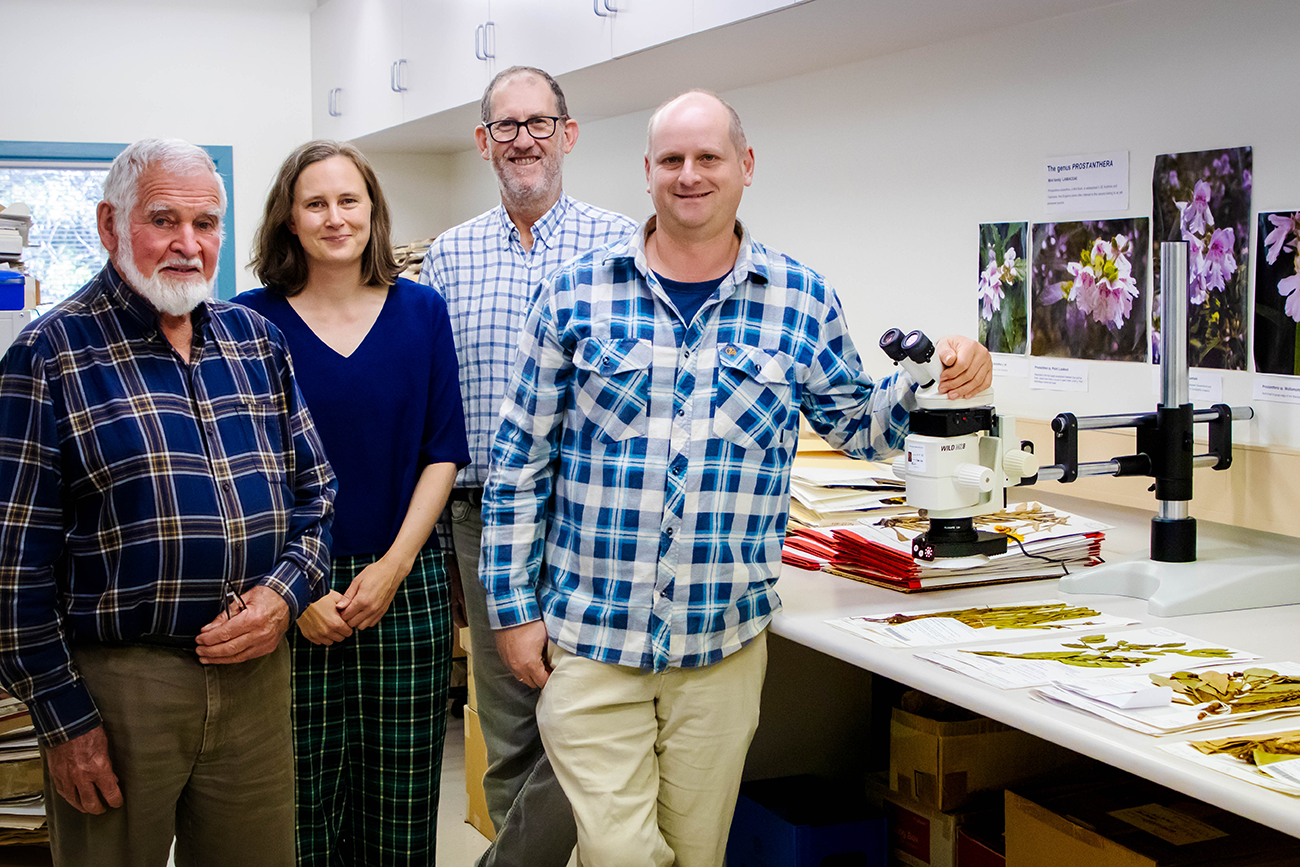Researchers from the University of New England’s N.C.W Beadle Herbarium have contributed to a world-first project documenting the evolutionary and ecological history of the globe’s flowering plants.
The study, recently published in the journal Nature, found that flowering plants have undergone two major surges in diversification since their origin 140 million years ago.
Led by the Royal Botanic Gardens (RBG) Kew UK, the project has brought together 279 botanists from around the world to create a genomic ‘tree of life’ that is hoped to aid future attempts to discover new species, refine plant classification, uncover new medicinal compounds, and conserve plants in the face of climate change and biodiversity loss.
In 2020, the Genomics for Australian Plants (GAP) consortium and its partners, including UNE, coordinated an ambitious project aiming to sequence DNA from every Australian plant genus, known as the Australian Angiosperm Tree of Life (AAToL) project, which contributed data for 759 plants to RBG’s global Plant and Fungal Trees of Life (PAFTOL) project.
Emeritus Professor Jeremy Bruhl, Associate Professor Rose Andrew, Dr Andrew Thornhill, and Dr Ian Telford from the N.C.W. Beadle Herbarium contributed tissue samples of dozens of native Australian plant species, including some unique to the biodiverse region of north-eastern New South Wales.
“It was a fantastic opportunity for UNE’s expertise in botany to be utilised, and to demonstrate the global significance of our herbarium,” said E/Prof. Bruhl, who was the director of the N.C.W. Beadle Herbarium at the beginning of the project, and organised UNE’s involvement.

Image: Specimens collected by the N.C.W. Beadle Herbarium for the project.
The broader PAFTOL project has collected DNA of over 9500 plants from living and centuries-old herbarium specimens, and has used 1.8 billion letters of genetic code.
While similar, smaller-scale projects have been undertaken, the PAFTOL project is built on 15 times more data than any comparable study.
“Understanding of the evolutionary relationships of plants has taken several large leaps over the last 30 years,” said A/Prof. Andrew, who is an evolutionary botanist and molecular ecologist at UNE.
“Advances in the methods of extracting rich DNA sequence data from plant specimens have been matched with enormous improvements in the analysis of big dataset. This progress, along with massive collaborative efforts, has enabled the AAToL and PAFTOL projects.”
By improving on the first broad tree of relationships of flowering plants that was published in 1993, this project provides a greater understanding that will be valuable for future research.
“The latest reconstructions of evolutionary history of flowering plants by PAFTOL and AAToL have sampled almost all genera of flowering plants for hundreds of gene regions, so the veracity of earlier hypotheses can be better tested, and novel findings emerge,” said E/Prof Bruhl.
Current herbarium director, Dr Andrew Thornhill, says UNE’s contribution to the project builds on the legacy of botanical research.
“UNE has had its own herbarium since the 1940s and the collection has been grown by staff and students over the 70-year history of the university to nowadays house over 110,000 herbarium specimens.”
Through this, the N.C.W. Beadle Herbarium serves the needs of biologists, ecologists, agriculture, horticulture and the broader public, through its high-quality reference collection and expertise in the regional flora of northern New South Wales.
“Larger projects such as AAToL and PAFTOL springboard from local-level discovery and publication of new species that our research students and staff are involved with,” said Honorary Curator, Dr Ian Telford.
The full paper has been published in the leading science journal, Nature, and can be accessed here.


